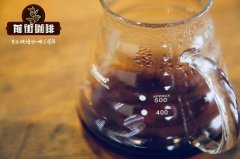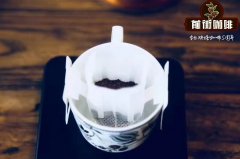Gaterama Manor Gatruma, Burundi introduces the characteristics of Burundian coffee

Professional coffee knowledge exchange more coffee bean information please follow the coffee workshop (Wechat official account cafe_style)
Burundian coffee beans are naturally processed bourbon grown in the Gaterama washing station in the Gitga region. Growing at an altitude of about 1700-1900 meters above sea level, only the most mature cherries are used for processing.
Bourbon is the parent company of many Arabian coffee varieties, named after Bourbon Island (now known as Reunion Island). This is a short tree with many secondary branches, producing 25 per cent more coffee on average than the Typica variety. Bourbon is known for its special sweet / sour balance and is considered by many producers and bakers to be a classic daily coffee.
Burundian individual coffee is best suited for alternative brewing methods, including hand brewing, Chemex and French pressing. These methods can lead to a better sour / sweet balance in coffee.
The Muyange and Nkongwe Hills planting areas are located in the Bugendana area and cherries are treated at the Gaterama ground washing station. The quality of Burundian coffee is constantly improving, and in order to ensure the quality of the coffee, farmers in the region choose only the most mature cherries before processing. Arabica bourbon varieties are grown as cash crops in most of the country's coffee industry.
Burundi has about 800000 coffee growers / producers, and the industry accounts for about 80 per cent of the country's export earnings. Most farms across the country plant as many as 50-250 trees, which is not enough for farmers to trade directly themselves, which means that farmers take cherries to cooperatives and washing stations for processing and export.
The weather in Burundi is a natural coffee-growing area with many high mountains, volcanic soil protected by nutrients and mist, and all areas are set along the equator. This creates the first conditions for the rapid development of specialty coffee in the region, which earns more income for farmers and is still a huge price for end customers. High-growth coffee from the provinces of Kayanza,Ngozi and Muyange (also spelled Muyinga) began to become famous in the foreign coffee industry. The increase in demand for specialty coffee also means that farmers are reviewing their practices and paying more attention to crops to increase yields.
For example, Gaterama cleaning stations are working with farmers to obtain organic certification. New trees have been planted and planted organically, and when the trees are planted and ready for the first harvest, the station will receive organic certification within three years. In this pursuit, they are training their farmers to devote themselves to organic farming techniques.
The station also uses Kenyan-style double fermentation technology to extract sweetness and fruit flavor and increase the high acidity of Burundian coffee.
Qianjie recommended cooking parameters:
Hand punch: V60 filter cup small Fuji R440 grinding 3.5, water temperature about 90 degrees
The recommended grinding degree of normal pressure is 4 and the water temperature is 90 ℃.
The recommended siphon grinding degree is 4, and the water temperature is 90 ℃ ~ 91 ℃.
The pressure grinding degree of Philharmonic is recommended to be 3.5, and the water temperature is 90 ℃.
Important Notice :
前街咖啡 FrontStreet Coffee has moved to new addredd:
FrontStreet Coffee Address: 315,Donghua East Road,GuangZhou
Tel:020 38364473
- Prev

Endebess Estate Kenya Coffee Estate Kenya
Professional coffee knowledge exchange More coffee bean information Please pay attention to Coffee Workshop (Weixin Official Accounts cafe_style) Endebess Estate is located in the north of Kenya's eastern rift valley, near Kitale market town in Trans Nzoiya County. It has a total land area of approximately 758 acres, of which 248 species are coffee. Natural provided with fresh river water of Koitobos River for full
- Next

Introduction of Coffee Manor in Papua New Guinea
For more information on coffee beans, please follow the Coffee Workshop (Wechat official account cafe_style) Papua New Guinea is located in the east of the Indonesian archipelago. Papua New Guinea, which is mainly highland, has a pattern of large manors / farms and small farmers growing a wide variety of coffee. The coffee flavor of Papua New Guinea is very different from that of other Asian regions such as Indonesia.
Related
- Does Rose Summer choose Blue, Green or Red? Detailed explanation of Rose Summer Coffee plots and Classification in Panamanian Jade Manor
- What is the difference between the origin, producing area, processing plant, cooperative and manor of coffee beans?
- How fine does the espresso powder fit? how to grind the espresso?
- Sca coffee roasting degree color card coffee roasting degree 8 roasting color values what do you mean?
- The practice of lattes: how to make lattes at home
- Introduction to Indonesian Fine Coffee beans-- Java Coffee producing area of Indonesian Arabica Coffee
- How much will the flavor of light and medium roasted rose summer be expressed? What baking level is rose summer suitable for?
- Introduction to the characteristics of washing, sun-drying or wet-planing coffee commonly used in Mantenin, Indonesia
- Price characteristics of Arabica Coffee Bean Starbucks introduction to Manning Coffee Bean Taste producing area Variety Manor
- What is the authentic Yega flavor? What are the flavor characteristics of the really excellent Yejasuffi coffee beans?

